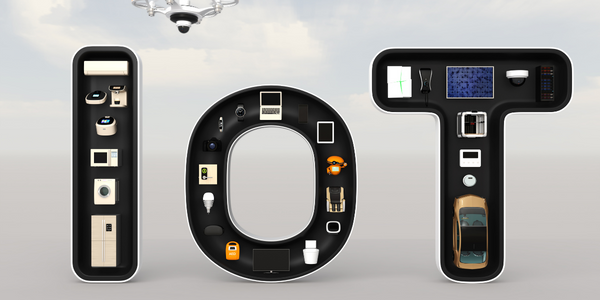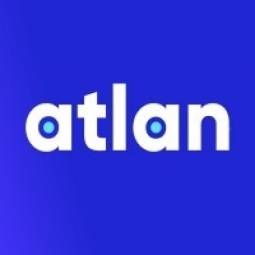Technology Category
- Analytics & Modeling - Data-as-a-Service
- Networks & Connectivity - Gateways
Applicable Industries
- Consumer Goods
- Equipment & Machinery
Applicable Functions
- Procurement
- Warehouse & Inventory Management
Use Cases
- Inventory Management
- Time Sensitive Networking
Services
- Data Science Services
- System Integration
About The Customer
Chargebee is a market-leading technology solution for recurring revenue management, founded in 2011. The company supports over 4,500 customers and powers the entire recurring revenue life cycle, from subscription billing to invoicing, to cash revenue recognition, receivables, retention, and more. Chargebee supports more than 100 currencies across 53 countries, integrates with 55 revenue technologies, and maintains more than 30 payment gateways. The company's data team is responsible for all internal reporting and data needs across the organization, working together to drive the data culture at Chargebee. In early 2021, the company's growth accelerated significantly, leading to an increase in data requests and a need for a more efficient data management solution.
The Challenge
Chargebee, a leading technology solution for recurring revenue management, faced a significant challenge in early 2021 when its growth led to an increase in data requests. The company's Data Engineering team was responsible for processing these requests, both from internal colleagues and customers. However, the volume of requests was so high that internal data requests were often pushed to the back of the queue, leading to missed SLAs and dissatisfaction among stakeholders. The team attempted to address this issue by hiring new colleagues, but the transactional nature of their Data Engineering function made hiring difficult. They also tried to automate and standardize the process by creating dashboards and workflows, but these were often too bespoke to service with a single view of data. As a result, the data request volumes continued to grow, with the team receiving 350 requests per quarter, 80 of which were repetitive requests. Struggling to meet their SLAs and with growing escalations to subject matter experts, Chargebee needed to find a new way to meet their colleagues’ and customers’ expectations.
The Solution
Chargebee began evaluating the Data & Analytics software market, focusing on self-service as a potential solution. They discovered the Active Metadata Management and third-gen data catalog market, and began evaluating Atlan. They were impressed with the features that Atlan had to offer, including the ability to set up a data catalog and a metric glossary. After choosing to purchase Atlan, the Chargebee team analyzed data from two previous quarters to understand who their most frequent requesters were and what type of data requests were coming into the system. They then onboarded a set of users from across the organization, who they called Atlan Champions. These users received thorough enablement, like walkthroughs, context on how to find data, and instructions on how to use Atlan. They also connected Tableau with Atlan, enabling data consumers to search for dashboards on Atlan, then land in the right resource in Tableau directly. With this solution, users could now search for relevant metrics, learning directly in Atlan how they are defined and calculated.
Operational Impact
Quantitative Benefit

Case Study missing?
Start adding your own!
Register with your work email and create a new case study profile for your business.
Related Case Studies.

Case Study
Smart Water Filtration Systems
Before working with Ayla Networks, Ozner was already using cloud connectivity to identify and solve water-filtration system malfunctions as well as to monitor filter cartridges for replacements.But, in June 2015, Ozner executives talked with Ayla about how the company might further improve its water systems with IoT technology. They liked what they heard from Ayla, but the executives needed to be sure that Ayla’s Agile IoT Platform provided the security and reliability Ozner required.

Case Study
IoT enabled Fleet Management with MindSphere
In view of growing competition, Gämmerler had a strong need to remain competitive via process optimization, reliability and gentle handling of printed products, even at highest press speeds. In addition, a digitalization initiative also included developing a key differentiation via data-driven services offers.
.png)
Case Study
Improving Vending Machine Profitability with the Internet of Things (IoT)
The vending industry is undergoing a sea change, taking advantage of new technologies to go beyond just delivering snacks to creating a new retail location. Intelligent vending machines can be found in many public locations as well as company facilities, selling different types of goods and services, including even computer accessories, gold bars, tickets, and office supplies. With increasing sophistication, they may also provide time- and location-based data pertaining to sales, inventory, and customer preferences. But at the end of the day, vending machine operators know greater profitability is driven by higher sales and lower operating costs.

Case Study
Predictive Maintenance for Industrial Chillers
For global leaders in the industrial chiller manufacturing, reliability of the entire production process is of the utmost importance. Chillers are refrigeration systems that produce ice water to provide cooling for a process or industrial application. One of those leaders sought a way to respond to asset performance issues, even before they occur. The intelligence to guarantee maximum reliability of cooling devices is embedded (pre-alarming). A pre-alarming phase means that the cooling device still works, but symptoms may appear, telling manufacturers that a failure is likely to occur in the near future. Chillers who are not internet connected at that moment, provide little insight in this pre-alarming phase.

Case Study
Premium Appliance Producer Innovates with Internet of Everything
Sub-Zero faced the largest product launch in the company’s history:It wanted to launch 60 new products as scheduled while simultaneously opening a new “greenfield” production facility, yet still adhering to stringent quality requirements and manage issues from new supply-chain partners. A the same time, it wanted to increase staff productivity time and collaboration while reducing travel and costs.








